Moving to Nevada: Discover the Silver State
We created this guide for moving to Nevada to help those who are in their very early stages of researching where they’d like to move. So, what exactly do you need to know before moving to Nevada? We’ve compiled some of the most important items you should consider when making this big decision.
According to 2020 Census data, Nevada was one of the top five fastest growing states of the last decade in terms of population, with a massive 15% growth in population. So, is Nevada the right state for you to move?
What You Need to Know about Nevada’s Geography
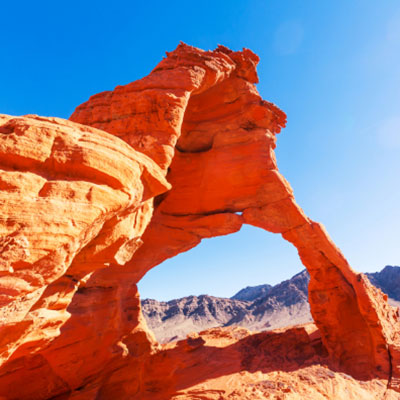
Nevada is in the western region of the U.S., with Oregon to the northwest, Idaho to the northeast, California to the west, Arizona to the southeast, and Utah to the east. Fun fact: the Nevada is the fourth-largest producer of gold in the world!
If you love exploring of lots of different impressive natural marvels, Nevada may be the right place for you. With an area of 110,577 square miles, Nevada is the seventh largest state in the U.S., and you’ll discover something new around every corner.
The state is almost entirely within the Basin and Range Province, and many north-south mountain ranges break up Nevada leaving endorheic valleys between them. Much of the northern part of Nevada is within the Great Basin and is a mild desert. The Humboldt River crosses from east to west across this part of Nevada, draining into the Humboldt Sink near Lovelock.
From the Mojave Desert with the shadow of the Sierra Nevada mountains in the south to Lake Tahoe on the California border in the north and the Spring Mountain Range in between, Nevada has a lot of incredible nature to behold. (Nevada is also home to the infamous Area 51!)
Nevada’s highest point, Boundary Peak, is in the White Mountains less than half a mile from the California state line, and it stands at 13,147 ft tall. By comparison, Nevada’s lowest point found in the Colorado River at the California border, and it’s only 481ft!
This extreme difference makes for some interesting geography, including “sky islands” named as such because they harbor lush forests high above the desert plains!
Moving to Nevada Guide on the Weather in Nevada

Nevada is the driest state in the U.S. It is mostly desert and semi-arid, with the exception being the Las Vegas Valley. It may surprise you to learn that while winters in northern Nevada are long and fairly cold, the winter season in the summer part of the state tends to be short and mild. This means that the long, dry summers can see temperatures well over one hundred degrees!
Monthly normal high and low temperatures really depend on where in the state you live. Nevada has dangers associated with extreme hot temperatures, which should be something to consider if you plan to build a home after moving to Nevada.
Moving to Nevada Guide on Getting a Job in the Silver State
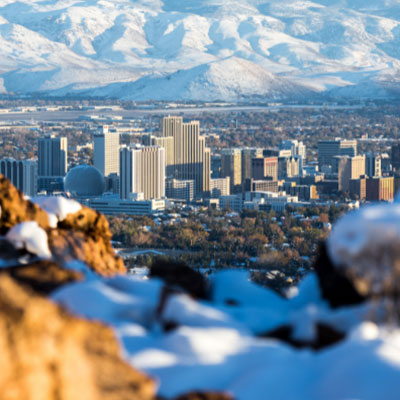
If you’re looking for a place to grow your career, consider moving to Nevada! According to a report published by the Associated Press, at the time of authoring this article, the state of Nevada has seen a steady stabilization of the unemployment rate following the COVID-19 pandemic. In fact, since April 2020, Nevada has recovered about 68% of jobs lost during the recession and overall employment has grown to within 92% of the prerecession peak!
Nevada continues to add more jobs, resulting in a state-wide unemployment rate of around 7.7%. Industries showing solid job gains included aerospace & defense, health, mining, and tourism & gaming.
What’s the situation on buying alcohol in Nevada?

Who isn’t curious about how to toast moving to a new state! In Nevada, a person must be twenty-one to buy or consume alcohol. Although public intoxication, or being drunk in public, is not a crime, intoxicated people risk being arrest for such offenses as breaching the peace, public urination, trespass, and jaywalking. Additionally, it is illegal to drive with unsealed cans or uncorked bottles of alcohol regardless of if the container is out of reach of the driver.
Interestingly, there are no time restrictions for selling or buying alcohol in Nevada, and alcohol can be bought or sold seven days a week, 24 hours a day, including Sunday. Of course, driving while impaired by alcohol or with a blood alcohol content of .08% or higher will get you in trouble. Fun fact: Nevada has two “dry cities,” Alamo and Panaca, where it is illegal to sell alcohol except by businesses licensed to sell it!
What is there to do in Nevada?
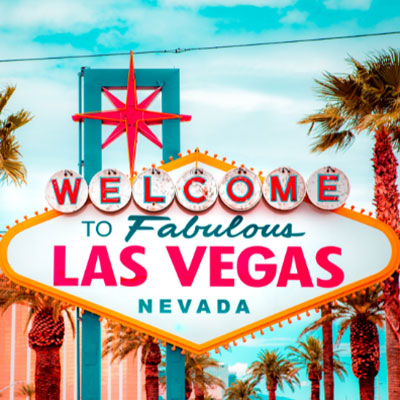
Hopefully you like being entertained! Nevada is home the famous, or infamous, city of Las Vegas. The Las Vegas Strip is home to multiple casinos, music venues, bars, and world class restaurants. Vegas may be the most well-known city in the state, but the cities of Reno, Lake Tahoe, and Laughlin also attract visitors from around the nation and the world. Nevada is also home to multiple professional sports franchises, and it supports a healthy college sports culture, as well.
Another choice for entertainment is to head out to one of the many beautiful state parks. The Nevada Division of State Parks manages twenty-three park units, some of which have multiple units and include such treasures as Cathedral Gorge State Park, Berlin-Ichthyosaur State Park, the Valley of Fire State Park. If you’re like us, we’re sure you’ll agree that outdoor Nevada is the best. You’ll be in awe each and everything you step outside!
Important State Symbols in Nevada
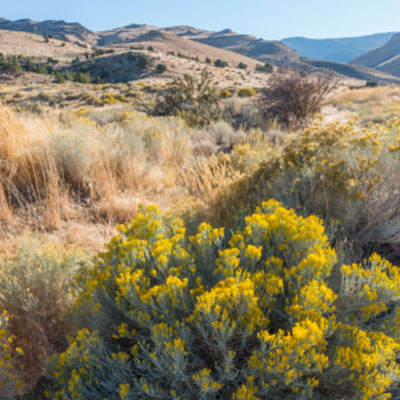
The state of Nevada has almost thirty official state symbols; we’ve included a few of our favorites here. The first, and most important, is the state’s name. Nevada got its name from the Spanish explorers who called it “snowy” after seeing snow tipped mountains that reminded them the Sierra Nevada mountains back in Spain. Nevada’s nickname, the Silver State, came after large deposits of silver ore were discovered in the territory, which lead to its first population boom!
The state bird is the Mountain Bluebird, and the state flower is the Sagebrush. Another one of our favorite Nevada symbols is the state fish: the Lahontan Cutthroat Trout. Probably the most unexpected state symbol is the state locomotive – Engine No. 40!
Lesser-Known FAQs About Moving to Nevada
Q: What is the capital of Nevada?
A: The capital of Nevada is Carson City. Carson City is the sixth most populated city in Nevada, coming in behind both the more famous cities of Las Vegas and Reno. Following the 2020 census, Carson City showed signs of sustained population growth, meaning moving here would make you part of a growing number of people calling this gem of a town home.
Carson City began as a stopover for California-bound emigrants until the discovery of silver in the mountains to the northeast, which really solidified Carson City’s place on the map. Additionally, Carson City is only one of two state capitals that border another state, the other being Trenton, New Jersey!
Q: How do Nevada’s public schools rank nationally?
A: According to a study by US News, Nevada public high schools rank 7/50 in a national breakdown tracking state-by-state high school performance. While education quality can vary widely depending on where in the state you live, this report takes the weighted average of the state’s high school performance into consideration. Seems like a pretty solid ranking to us!
Q: What kind of taxes can you expect to pay in Nevada?
A: While tourists come to Nevada to gamble and experience Las Vegas, residents pay no personal income tax, and the state offers no corporate tax, no franchise tax, and no inventory tax. The Silver State does have a 6.85% sales tax, and also collects fees, most of them related to those casinos the tourists flock to.
Nevada’s property tax rates are among the lowest in the U.S., with the state’s average at just around 0.53% – far below the national average of 1.07%!
Q: What’s it like to vote in Nevada?
A: Nevada allows any voter to request a ballot by mail. You can also vote in person or participate in early voting. To be eligible to vote, you must be a citizen of the U.S. and at least eighteen years old on the day of the election; have continuously resided in the State of Nevada, in your county, at least 30 days and in your precinct at least 10 days before the next election; not currently serving a term of imprisonment for a felony conviction; not be determined by a court of law to be mentally incompetent; and claim no other place as your legal residence.
Q: What are the rules for switching your driver’s license after moving to Nevada?
A: If you have an out-of-state driver’s license, you’ll need to transfer it for a Nevada license once you have lived in-state for thirty consecutive days and are considered a resident. A person is considered a resident who has a legal residence in Nevada; who engaged in intrastate business and uses a vehicle for this business; who physically resides and who accepts employment within the state; and declares themselves to be a resident of Nevada to obtain privileges that a non-resident would not have under normal circumstances.
You’ll need to be sure to bring your valid, state-issued driver’s license or I.D. card, proof of your social security number, and an additional proof of your identity to your local Department of Motor Vehicles.
Q: When do you need to update your car plates after moving to Nevada?
A: Nevada requires that you register your out-of-state vehicle within thirty days of establishing residency or else you may face a fine. To register your out-of-state vehicle in Nevada, you’ll need to head to a Nevada Department of Motor Vehicles office with your new Nevada driver’s license, proof of insurance, Nevada Emissions Vehicle Inspection Report (if necessary), current registration and plates, title, and Vehicle Identification Number (VIN) Inspection.
You’ll also want to be ready to pay a fee to switch your license plates. Reminder! You must apply for and pass the test for your Nevada driver’s license before registering your out-of-state vehicle within thirty days!
Q: What’s it like driving in Nevada?
A: Like most state, the driving conditions in Nevada are very different in urban and rural areas. Nevada ranked at number 20 as the state with the worst drivers in America. Now, that doesn’t mean Nevada drivers are perfect – it just means you can’t just look out the window at the flashing Vegas lights!
Q: Does Nevada have any walkable cities?
A: Yes! Quite a few cities across Nevada have varying degrees of walkability. Of all cities in Nevada, your best bet for having a walkable lifestyle is going to be in Winchester, Paradise, or Spring Valley, all within Clark County and part of the mega city of Las Vegas.
Las Vegas, the largest city in Nevada, is walkable, but with the extreme heat and the influx of tourists, even that’s going to be difficult. Thankfully, the city does have public transportation, the RTC Transit system, which can help you get around.
Is Nevada the Right State for You to Move?
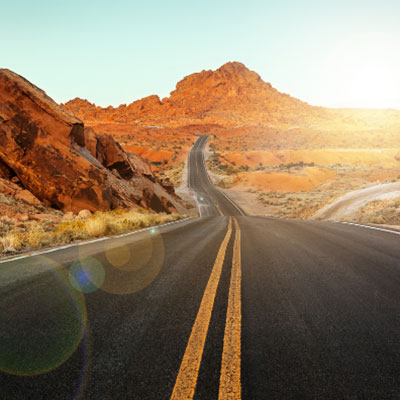
For those of you looking for lots to do, while enjoying living in a place with a rich variety of outdoor wonders, Nevada (and specifically the cities of Las Vegas and Reno) may be the right fit for you.
The beautiful typography of Nevada, high quality schools, low property taxes, and growing economy all lend themselves into making life great in the Silver State. However, extreme temperatures, desert climate, and high influx of tourists show that while exceptional, Nevada isn’t perfect.



